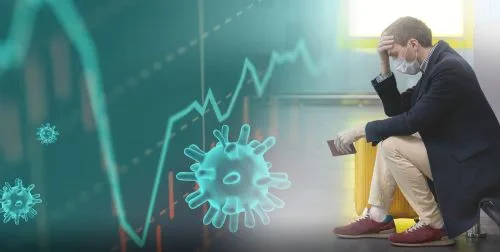Where did the COVID-19 virus really come from?
We have two possible answers. The virus either arose from a lab leak in Wuhan, China or it came from a wet market there.
In February, an unreleased report from the U.S. Department of Energy, which oversees a network of U.S. labs, concluded with “low confidence” that the COVID-19 outbreak originated from an accidental lab leak in Wuhan, China. Even with this report, however, other U.S. government agencies and leading scientists have not changed their opinion that the virus causing COVID-19 came from the wet market in Wuhan, as a result of transmission from animals to humans – a phenomenon known as a spillover event.
In fact, three weeks after the DOE report, researchers presented data at a World Health Organization meeting that suggested racoon dogs may have been the intermediate host for the virus. Racoon dogs are wild animals sold in the Wuhan market, and researchers found traces of coronavirus in their stall. WHO officials cautioned that this new information is not definitive and the virus could have had origins in a lab.
We expect this debate to continue, and we may never reach consensus on the origins of COVID-19.
The origin of the virus, however, may not be the most important question we can ask from a biosecurity risk management perspective. The more relevant question might be: What can the ongoing debate teach us about enterprise preparedness and risk management?
Future outbreaks may originate from labs, wet markets or other sources. It’s valuable to gain insights about both in order to prepare for the next outbreak, regardless of its origin. At PHC Global, we want to share what we know to help you develop risk mitigation strategies for your enterprise.
1. Lab leaks: Preventing and preparing for potential lab leaks
The suggestion that COVID-19 originated in a lab is plausible because of the known potential for accidental lab leaks. Labs commonly work with infectious agents, and although most don’t have malicious or offensive motives, there’s still potential for accidental release of these organisms.
In fact, if the COVID-19 virus did originate from a lab leak, it was hardly a unique case. In November 2022, poliovirus was detected in sewage in the Netherlands, and research showed it had leaked from a lab there. Unfortunately, lab leaks can and do occur. When they do, they often leave social, political and supply chain disruption in their wake, creating panic and international relations disasters.
Events like this underscore the need to maintain the highest safety precautions at facilities working with potentially infectious germs. Universal codes of conduct at these facilities, and international oversight of labs, can also reduce risks. But even the best preventative measures sometimes fail. When disaster from a lab leak strikes, it’s vital that your enterprise has the foresight to see it coming and the time to plan your response.
2. Animal spillover events: inevitable drivers of human disease
If the COVID-19 pandemic originated from animal-to-human spillover, it is also not the first time it’s happened. Past examples include the 1918 influenza pandemic, Bubonic Plague, SARS and MERS. When one of these events has occurred, global economies have experienced major disruption. Could it happen again? Sadly, the question is not if, but when.
In fact, spillover to humans is happening now, although in small numbers. Human cases of the H5N1 Avian Flu have been reported recently in Cambodia. The Marburg virus has, so far, been responsible for 27 human deaths in Equatorial Guinea. Spillover events will continue to occur, and although most will have a limited scope of impact, some will lead to sustained human-to-human transmission with its associated consequences.
3. Prevention of animal spillover events
Is there anything we can do to reduce animal spillover events? Fortunately, we have many options. These include:
- Improving land use, especially at the human-forest interface
- Improving and standardizing animal management
- Regulating wet markets
- Limiting poaching
However, none of these measures can fully eliminate the threat.
4. An effective global response to animal spillover events
What happens when animal spillover events do occur? A multi-national collaborative response to spillover events, with broad participation of industry, governments and academia, lending expertise, resources and genomic analysis to the effort is essential. Global biosecurity platforms like the PHC Pharos will also be critical to these efforts by providing timely, science-based intelligence, using a range of cutting-edge data streams coupled with expert threat assessments and guidance. Enhanced diagnostic testing, pathogen surveillance and genomics capacities are all key to global preparedness.
5. Enterprise preparedness for animal spillover events
Enterprises should expect future animal-to-human transmission events to drive local, regional, national and global outbreaks. Organizational leadership should understand the risks unique to the areas in which they operate. For instance, an awareness of Ebola in parts of sub-Saharan Africa, or plague in some Western regions of the U.S., is crucial.
Enterprises also should prepare for future zoonotic pathogens (those that have jumped from animals to humans) that are likely to cause global disease. These could include non-COVID coronaviruses and flus that originated from animals. The PHC Pharos Platform can serve as a powerful tool in this effort, offering foresight and actionable insights so that enterprises can anticipate outcomes before they occur.
6. An effective global response to the debate
The debate surrounding the origins of COVID-19 has been fueled by the chaos inherent in a rapidly evolving pandemic, politics and other factors. It also has been amplified by lack of information sharing by multiple countries. Unfortunately, the debate distracts from the reality that no matter the origin, viruses like this will arise again, so learning from COVID-19 is essential.
Now is the time to prepare with measures including:
- investing in public health infrastructure
- improving transparency surrounding lab activities and disease outbreaks
- enhancing international oversight of labs
- expanding genomics
- developing rapid diagnostics
- Increasing wastewater pathogen surveillance capacities
7. How should your enterprise respond?
For effective critical decision-making, your enterprise should be empowered with the following:
- Use science-based guidance for navigating a crisis
- Establish purpose-built solutions in place for your unique business needs
- Cultivate the ability to rapidly forecast trends and global relationships
- Collect data from diverse, reliable sources to drive optimal analysis
- Develop work-from-home options as established mitigation strategies
Despite our best efforts, not all crises can be prevented. However, global and enterprise preparedness can mitigate the human impact of the next public health disaster.
References:
- Lab Leak Most Likely Caused Pandemic, Energy Dept. Says
- The Huanan Seafood Wholesale Market in Wuhan was the early epicenter of the COVID-19 pandemic
- Are raccoon dogs the missing link in the mystery of COVID-19’s origins? The answer depends on whom you talk to
- Wild poliovirus type 3 (WPV3)-shedding event following detection in environmental surveillance of poliovirus essential facilities, the Netherlands, November 2022 to January 2023
- Beyond the pandemic origins debate
- Cambodia Reports 2nd human case of h5n1 bird flu
For more information about PHC Global and the PHC Pharos Platform, view our video or visit our website



